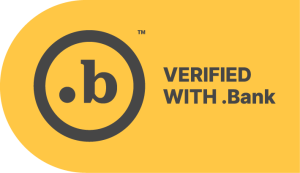If you’re looking to save for retirement or have another substantial financial goal, setting aside money in a savings account is a great start, but it may not yield the returns you need. This could lead you to explore a variety of investment options to see where you can put your money to work.
While there are many options out there, you may be considering how risky different types of investments are. It’s important to realize that every investment has an element of risk. However, the range of risk varies depending on how you choose to invest.
Stick with us to learn more about the importance of investing, different types of investments and how to better understand your appetite for investment risk.
Why Is Investing So Important to Building Wealth?
Saving cash for an emergency or large purchase (such as a vacation or vehicle) is a great principle to follow, especially when you need it to be available to spend. Saving for a short-term goal, like covering three months’ expenses or buying a luxury item, is the perfect way to utilize a savings account. However, savings alone may not be enough for long-term plans.
When you put your money aside in a secure savings account, the pile may grow a bit with interest, but it will largely stay the same. Even if you save throughout your entire career, it will likely not be enough when you want to retire.
Putting that pile of cash into an investment vehicle or a product designed to produce returns on investments is a way to boost your savings efforts. Money market accounts, certificates of deposit and individual retirement accounts are a few financial vehicles you can use to increase your investment funds. As your preferred vehicle has time to sit on the market, it increases in value. You see the increase once the investment vehicle is sold or reaches its maturity date.
Types of Investment Risk – 6 Common Investment Options
The idea of placing the money you worked hard for into an investment vehicle that could potentially lose value can be scary. If you decide to invest, your funds will experience ups and downs as the market changes and the economy experiences growth and decline.
The important thing to remember is that the ups and downs in the moment shouldn’t change your strategy. Investment is about long-term growth, not short-term gains. While this should be your strategy for all investments, volatility can vary between investment options. Let’s review a few of these options and learn a little more about how risky or secure they are.
Money Market Account
A money market account (MMA) is a deposit savings account that pays interest based on current interest rates. Typically, interest on an MMA is compounded daily and paid monthly. It is common for them to have tiered rates, meaning higher balances are rewarded with a higher annual percentage yield (APY). Often these accounts may come with a debit card and check-writing privileges.
The interest rates offered on money market accounts can vary based on the financial institution, so it may be beneficial to check a few different places, including your local community bank. MMAs typically have higher minimum deposit or balance requirements than a regular savings accounts.
Money market accounts obtained through a bank have a low risk factor. Not only is your money insured by the FDIC (up to $250,000 per person or more, depending on the ownership category), but these accounts experience low volatility and are less prone to market fluctuations. They are also more liquid than other investments.
Certificates of Deposit
A certificate of deposit (CD) is an investment option offered by your bank. CDs are a form of savings account that offers a higher interest rate than your regular savings account. You agree to leave your deposit with the bank for a certain amount of time, varying from a few months to several years, and the bank agrees to pay it back to you with a fixed interest rate. Generally, the longer you agree to leave your money with the bank, the higher return you can expect to see.
Certificates are an extremely stable investment. CDs are an excellent low-risk option for investors at all stages but are particularly advantageous for investors with an established investment strategy.
Stocks
For many, the stock market is the first place they go when considering investments. This line of thinking makes sense due to the sheer number of American households that are directly invested in the stock market in some way.
A stock is a small piece of ownership of a company. Their value is tied to the overall value of the company. So, as the company increases in value, the stock also increases in value. They are a great starting point for investing as they offer the highest growth potential. There are variations in stock trading, such as index funds, exchange-traded funds and stock options. However, stocks are considered one of the riskiest investment vehicles due to their volatility in the marketplace.
Mutual Funds
A mutual fund is a pool of investment vehicles like stocks, bonds and other securities that a group of investors can join. One central financial advisor usually manages these funds. While these funds still carry risks, they are designed to spread the risk across the various investors. This way, you are not financially devastated if one of the investments does not perform well.
Bonds
A bond is a loan you buy from a distributing company or government agency with the promise that the borrowing organization will pay you back with interest. You can see a return by receiving payment at the bond’s maturity date, the date the borrowing organization must pay you back with interest, or by selling the bond before it reaches the date.
Bonds can vary in risk. The borrowing organization can default on the bond, which means they cannot repay their lenders. Government-affiliated bonds are generally more stable and less likely to default but have a lower return. Some corporate or company bonds can present a higher default risk, so they can yield a high return.
IRAs
An IRA, or Individual Retirement Account, is a tax-deferred savings account that provides tax advantages for retirement savings and is provided by many financial institutions, including your local bank. It is an account that holds investment assets purchased with a taxpayer’s earned income for the taxpayer’s eventual benefit in old age.
Two of the most common types of IRAs are Traditional and Roth.
- A Traditional IRA is an easy way to save your pre-taxed income for retirement. Money in a traditional IRA is not taxed until it is withdrawn, which means you enjoy tax-deferred growth on your investment. It also means you can take a tax deduction the year you contribute. You are required to start taking minimum distributions from a traditional IRA at age 73, but can start as early as 59 ½ without penalties. This type of IRA makes sense for those who feel their income at retirement will be lower than it is now.
- A Roth IRA is similar to a traditional IRA except that the money deposited into a Roth IRA has already been taxed, so you can enjoy tax-free growth and withdrawals, which are available after age 59 1/2. It’s important to note that there are limits to how much you can contribute to a Roth IRA which are based on your modified adjusted gross income and tax filing status. Typically, a Roth IRA is the best choice if you anticipate you will have a higher income at retirement than you do now.
The level of risk with either type of IRA will vary depending on the stocks and/or bonds you have selected.
Understanding Your Risk Appetite
You don’t want to start investing until you understand how much you can afford. Your local bank often has experienced staff that can help advise you when it comes to matters of investment.
If you choose to work with a financial advisor, they may have you fill out a questionnaire or form to learn more about how willing or able you are to take risks in your investment strategy. Risk ability is based on how well you can recover from a riskier investment.
A simple balance of assets and liabilities determines your ability to take on risk. The more assets and fewer liabilities you have, the more risk you can theoretically take on in your investment strategy, and vice versa. Your risk appetite will help you develop an investment strategy.
Once you understand your risk appetite, should you consult with a financial advisor or do all of your investing yourself?
Do I Need to Consult a Financial Advisor to Invest?
There are many avenues to access investment opportunities, especially as trade markets have opened up online. Whether you’re looking to set up a retirement fund or want to invest for shorter returns, you can manage your investments without the oversight of an advisor. However, if you feel uncomfortable making large investments or don’t feel like you have time to manage the intricacies of the market, it may be best to find a financial advisor.
Why Is My Bank Important to My Financial Future?
Investments carry risk, but you can start building wealth with a healthy balance of investment options and some good advice. A great place to start achieving your financial goals is your local bank. A local bank can offer excellent, steady investment options, make daily transactions a breeze and make it easy for you to start good money management habits.
At Community Point Bank, we have a variety of personal banking services and a suite of loan services that make it easy for you to achieve your financial goals. Plus, our knowledgeable and friendly staff can answer your questions and help you get started on your investment journey.
If you want to get in touch or visit us, go to our contact us page to learn more today.




